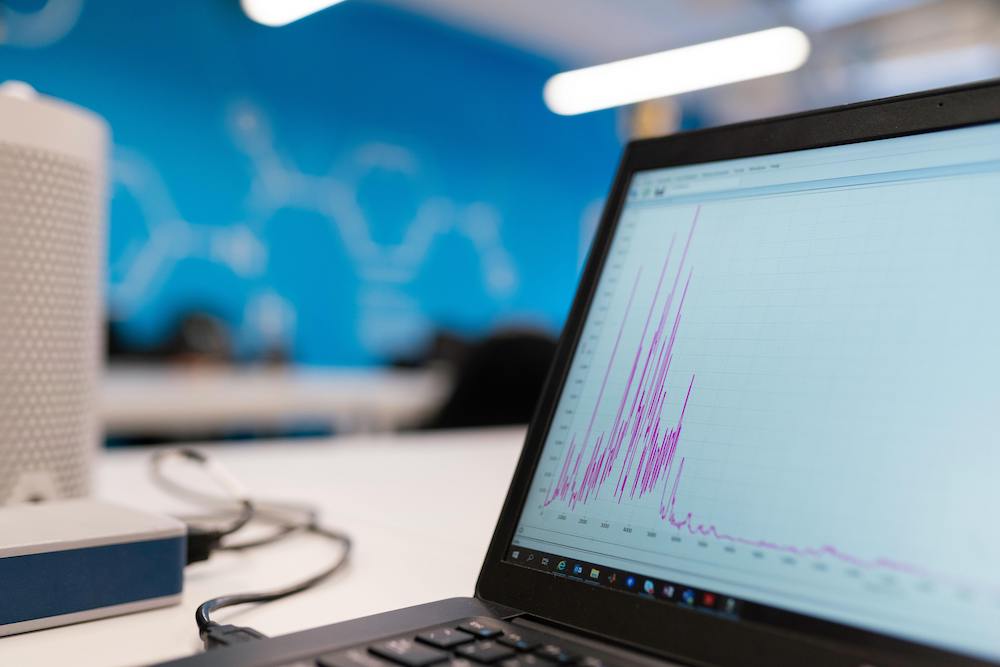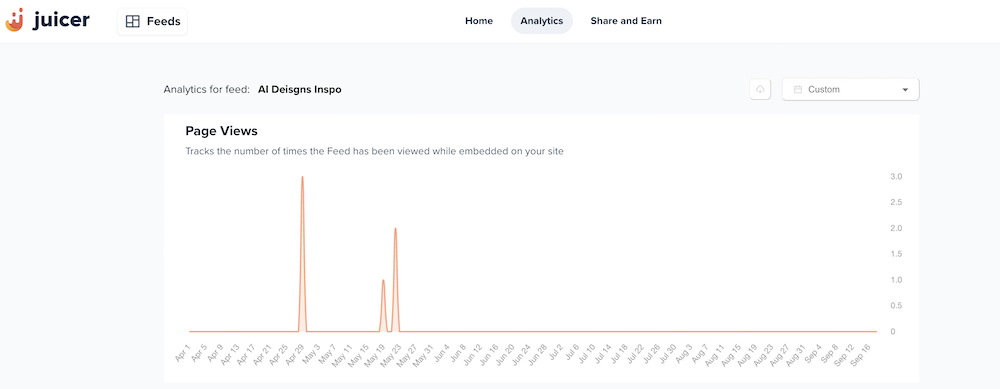Successful agencies create social media campaigns that generate valuable insights and drive measurable business growth. When your analytics connect social strategy directly to client outcomes, you transform from a service provider into a strategic partner. Here’s how to keep focusing on the social media metrics that matter to your clients, and how to provide customer-friendly social media reporting.
Key Takeaways
- Build comprehensive measurement systems that track key metrics across all social media channels and campaigns, focusing on audience interaction and engagement metrics that drive business outcomes.
- Prioritize metrics that connect to business goals like conversion rates, customer satisfaction scores, and advertising cost efficiency rather than vanity metrics that don’t influence strategic decisions.
- Leverage social wall analytics to create unified performance views across platforms, especially valuable for event engagement and community building initiatives.
- Focus on event-specific tracking when working with clients who host virtual events or in-person events, measuring interactive elements and audience engagement throughout the entire experience.
- Present results that drive decisions by connecting valuable insights to strategic recommendations that help clients optimize their social strategy and marketing efforts.

Establish Revenue-Connected Analytics
Smart social media managers build measurement frameworks that capture key metrics across all social media channels. Your target audience generates data points every time they interact with social media posts, and comprehensive tracking turns this activity into strategic guidance.
Focus on metrics that drive business decisions:
Conversion tracking from social media channels – Calculate conversion rate for traffic from social walls, social media posts, and social ad campaigns. Track how many website visitors take action after engaging with your content.
Customer satisfaction measurement – Monitor customer satisfaction score and net promoter score to understand how social media efforts influence customer loyalty and long-term relationships.
Audience engagement analysis – Track audience interaction patterns across different social media campaigns. Identify which platforms drive the most valuable engagement metrics and which content resonates with your target audience.
Brand visibility tracking – Measure brand’s visibility across social media channels and monitor how social strategy improvements affect net new followers and overall performance.
Event performance analytics – For clients who host events, track event engagement across digital displays, social media walls, and interactive polls during virtual events and in-person events.
Track so many metrics, but organize them around business outcomes that matter to each client’s specific goals across various industries.
Create Unified Cross-Platform Reporting
Social walls aggregate content from multiple social media channels, creating unified displays that showcase the best social media posts from campaigns. This approach provides more comprehensive audience interaction data than analyzing platforms separately.
Build effective cross-platform tracking
Using tools like Juicer, you can easily:
- Aggregate performance data from Instagram, TikTok, LinkedIn, and other social media channels into unified campaign reporting. Track how interactive elements affect audience engagement across different platforms.
- Monitor social wall engagement by measuring click-through rate from social walls to landing pages. Analyze how digital displays influence website visitor behavior during different reporting periods.
- Track cross-platform influence by identifying how content posted on one platform affects engagement across other social media channels. The same person might see your client’s content on multiple platforms, creating compound engagement effects.
- Measure community building through social walls that encourage user-generated content and showcase engaging posts from the target audience across various industries.
- Analyze advertising cost efficiency by comparing organic social media performance to paid social ad results. Show how stunning social walls and engaging posts deliver value compared to traditional advertising approaches.

Capture Event-Focused Analytics
Many agencies work with clients who regularly host spectacular events, from corporate conferences to graduation ceremonies. Event-focused social media analytics require specialized tracking to capture audience engagement during both virtual events and in-person events.
Track comprehensive event engagement:
- Monitor real-time social wall performance during events using digital displays and interactive elements. Track audience interaction with live social media feeds and measure engagement metrics as events unfold.
- Analyze interactive polls and audience participation to understand how event attendees engage with social media campaigns during spectacular events. This data helps optimize future event strategies.
- Measure brand visibility during events by tracking how social media posts and social wall displays affect overall performance and audience engagement throughout the entire reporting period.
- Calculate ROI for event marketing efforts by connecting event engagement to website visitor increases, landing page conversions, and post-event customer satisfaction scores.
- Track community building that happens during events, measuring how events and virtual events create lasting audience engagement beyond the immediate reporting period.
Present Results That Drive Strategic Growth
Transform valuable insights into compelling reports that demonstrate how social strategy drives business outcomes. Focus on important data that helps clients make informed decisions about future marketing efforts and social media campaigns.
Structure analytics reports strategically:
Lead with business impact metrics that show how social media campaigns contributed to customer satisfaction, brand’s visibility, and revenue growth. Calculate conversion rates and demonstrate how engaging posts drive website visitor actions.
Show cross-platform performance using social wall analytics that reveal how content performs across different social media channels. Highlight which platforms deliver the most valuable engagement metrics for your target audience.
Include event performance data when relevant, showing how virtual events and in person events drove audience engagement and community building. Track metrics from digital displays and interactive elements used during spectacular events.
Demonstrate advertising cost efficiency by comparing organic social media performance to paid social ad results. Show how stunning social walls achieve staggering results compared to traditional advertising approaches.
Provide strategic recommendations based on data points collected across multiple reporting periods. Use insights to guide future social media campaigns and content strategy decisions.
Streamlining Social Wall Performance Tracking
Managing analytics across multiple social media channels while tracking social wall performance can become complex quickly. Social media aggregators like Juicer consolidate content from various platforms into unified displays, making it easier to track engagement metrics and audience interaction across campaigns.
This approach works particularly well for agencies managing event engagement, where social walls display content from multiple social media channels on digital displays during virtual events or in-person events. Instead of manually tracking performance across platforms, you get consolidated analytics that show total campaign impact and audience engagement patterns.
The unified approach also helps when presenting social wall analytics to clients—they see how their stunning social walls drive website visitor engagement and contribute to overall marketing efforts across various industries.
Frequently Asked Questions
How often should agencies report social media analytics to clients?
Monthly reporting works well for ongoing social media campaigns, with weekly updates during active campaign periods or event engagement tracking. The key is consistency—establish a regular reporting period that provides enough data points to show meaningful trends in audience interaction and engagement metrics.
Which metrics should I prioritize for different client industries?
Match key metrics to industry goals. E-commerce clients focus on conversion rates and website visitor behavior from social walls. SaaS companies prioritize lead quality and customer satisfaction scores. Event-focused clients need event engagement and audience interaction tracking for virtual events and in-person events.
How do I track ROI when social media influences sales indirectly?
Use customer journey mapping to connect social media touchpoints to conversions. Track brand visibility increases after social media campaigns, monitor assisted conversions from social wall interactions, and analyze how engaging posts influence customer satisfaction and loyalty over multiple reporting periods.
What’s the best way to present social wall analytics to executives?
Focus on business outcomes rather than engagement metrics alone. Show how social walls drive website visitor actions, improve advertising cost efficiency, and contribute to building community engagement. Use visual reports that highlight important data and connect social strategy to measurable business impact.
How should I handle clients who want to track too many metrics?
Help clients focus on valuable metrics that drive strategic decisions. Show how key metrics like conversion rates and customer satisfaction scores provide more actionable insights than tracking every possible data point. Demonstrate how targeted measurement leads to better-informed decisions.
Should I include competitor social wall performance in reports?
Yes, include competitive analysis that shows how your client’s social media campaigns and social wall engagement compare to industry benchmarks. Focus on actionable insights that help optimize content strategy and audience interaction across different social media channels.




